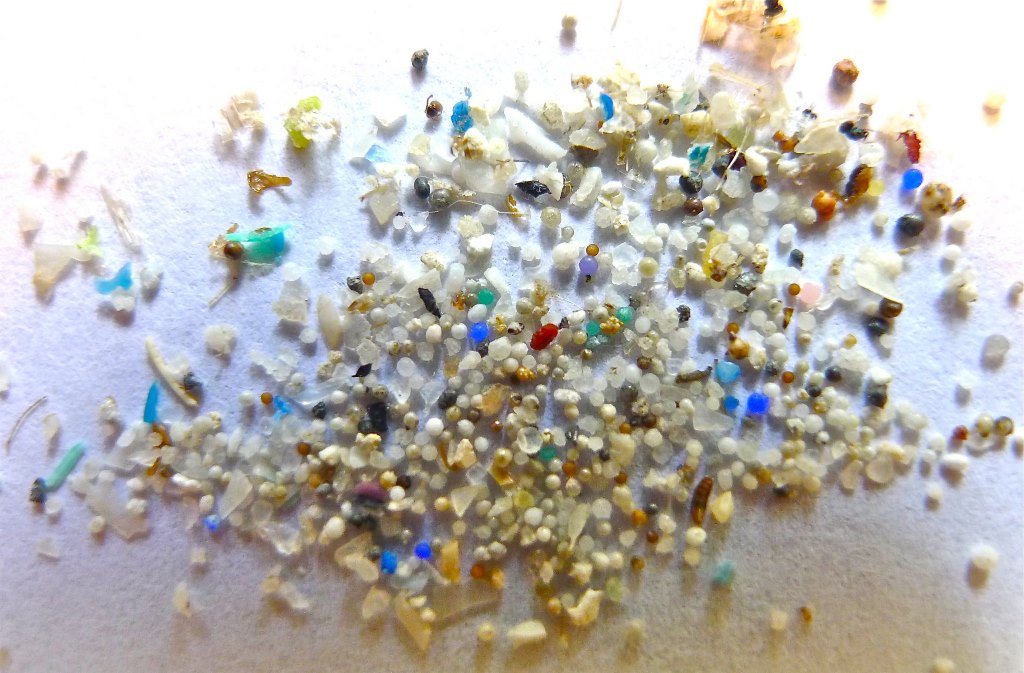Microplastics From Great Lakes Found In Beer
Researchers found 12 different brands of beer using Great Lakes water were contaminated with microplastics.

Microplastics. Oregon State University (CC BY-SA 2.0)
Researchers at the University of Minnesota have found microplastics in 12 brands of beer made with water from the Great Lakes. The study also found plastics contamination in sea salt and tap water from around the world.
The study was led by UMN School of Public Health graduate student Mary Kosuth with assistance from microplastics expert Sherri Mason of State University of New York at Fredonia, and overseen by UMN School of Public Health associate professor Betsy Wattenberg.
The team sampled 12 brands of beer from large brewers and craft brewers from around the Great Lakes. In every sample microscopic plastic fibers and particles were detected. Most of the fibers were smaller than five millimeters in length.
Wattenberg said what was interesting about the beer samples was a discrepancy in the amount of plastic contained in the final product when compared with the water used to make it.
“The amount of microplastics detected in the beer didn’t necessarily match the amount of microplastics detected in the water that was used to make the beer,” said Wattenberg. “And that sort of suggests that the plastics can be introduced at different steps in the process of making the beer.”
“I think what was surprising was the widespread contamination, that the contamination was detected in tap water throughout the world in many sources of tap water from both urban sources and rural sources, in both developing countries and developed countries,” Wattenberg said.
Sea salt was also found to be a vector for microplastics. The team studied 12 brands of sea salt from regions around the world purchased at grocery stores and specialty shops in Minneapolis. Every brand studied contained microplastics.
Wattenberg said she hopes the research raises awareness of how universal microplastics contamination is in water and consumable products.
“I think that awareness should really drive us to do two things: one is to try to find ways of reducing our use of plastics. Some applications of plastic are really necessary, for example for medical uses. But others we could really sort of reflect on whether we need so much plastic packaging, so many plastic water bottles and so on,” said Wattenberg. “And the other is to push for research to see how we can remove the plastics from the different water supplies so we’re not exposed to the plastics.”
The study was published in April by the online Journal PLOS ONE.
Listen to the discussion here.
Minnesota Researchers Find Microplastics In Beer Made With Great Lakes Water was originally published by Wisconsin Public Radio.






















Who thought microbeads were a good idea? I’d like to meet this business genius and punch them in the face.
“Most of the fibers were smaller than five millimeters in length.” Sure that isn’t supposed to be microns? I think we’d be noticing fibers five millimeters in length floating in the golden lager.
What are solutions? Filtering, Distillation?
This is going to be a bigger story. Don’t f@#$ with peoples beer.
Maybe not just microbeads, maybe also abrasion products from larger pieces.
‘Madison — Gov. Scott Walker signed 56 bills Wednesday, including ones that will block property tax increases for some public schools, bar local governments from banning plastic bags and make it illegal to use cellphones while driving in construction zones.’ Milwaukee Journal Sentinel, Mar. 30, 2016.